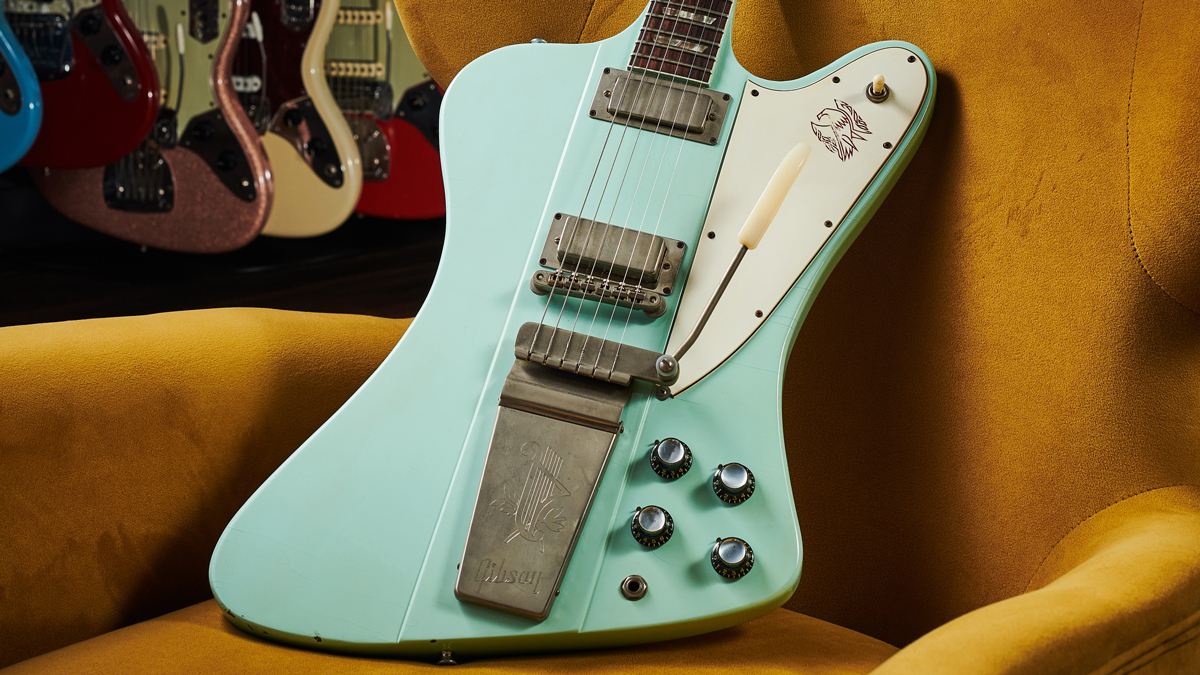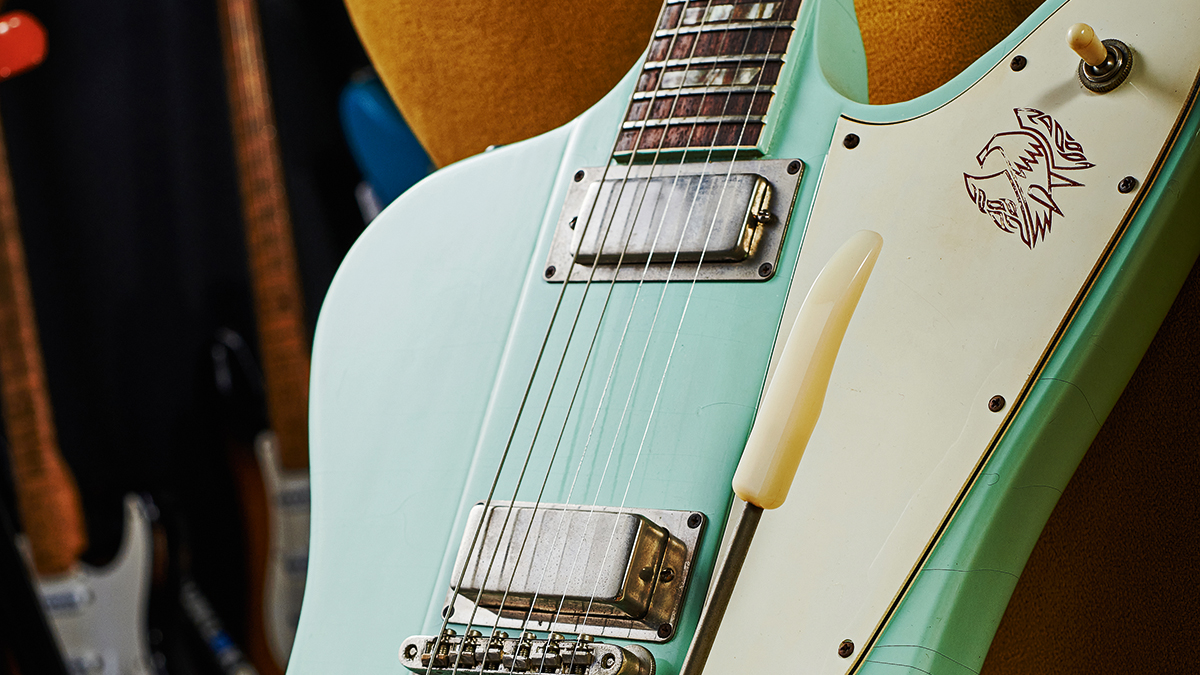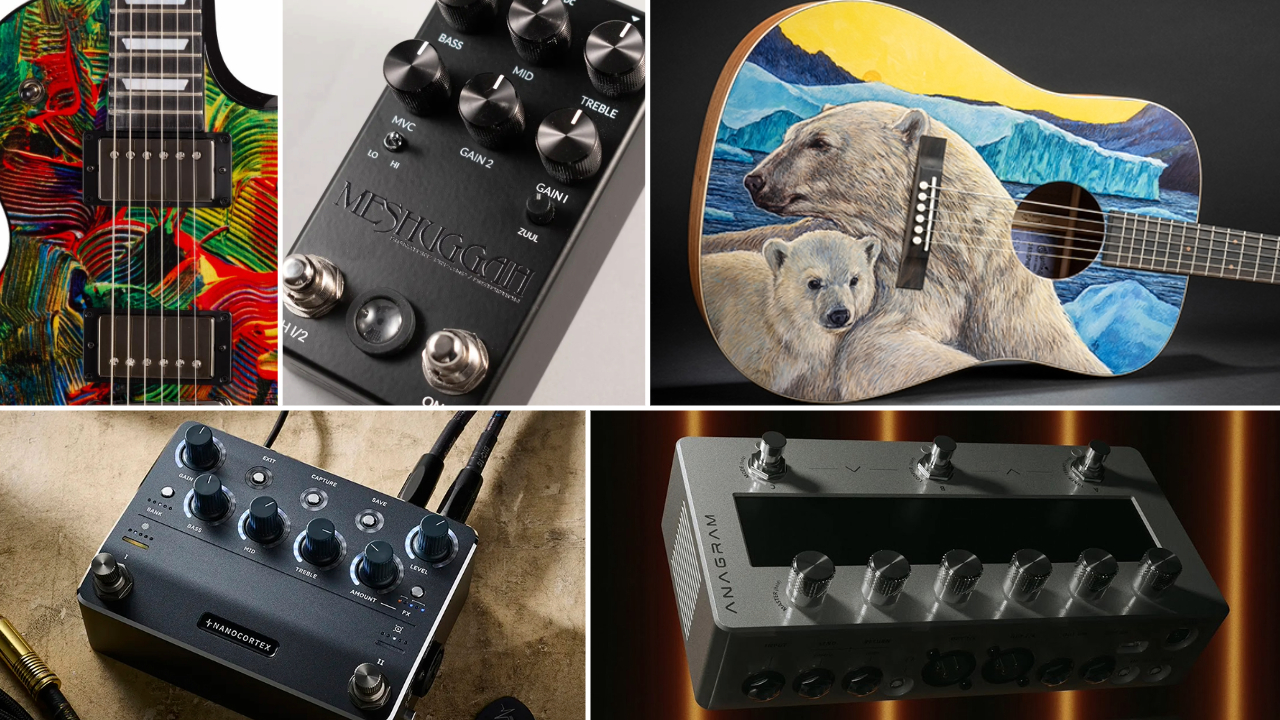The rarest Gibson Firebird of all time might just be this 1964 Kerry Green example
David Davidson of Well Strung Guitars reveals the story behind a bona-fide unicorn for Gibson collectors

With Fender enjoying a huge growth in popularity throughout the ’50s, Gibson was forced to try and beat Leo’s company at its own game. In the early ’60s, the Stratocaster hit what was arguably its peak as a design, with the classic rosewood-’board spec and a raft of custom colours available to order.
Keen to come up with a product that echoed the Strat’s sleek modern lines and versatile range of tones, Gibson hired car designer Ray Dietrich to design the reverse-shape Firebird – a difficult-to-construct guitar that didn’t last long before being altered to a simpler, non-reverse design – making early Firebirds in Custom Colours some of the rarest electric guitars in existence.
“First of all, they didn’t make Firebirds in big numbers to start with,” says David Davidson of New York’s Well Strung Guitars. “Reverse Firebirds were a failed experiment that lost Gibson money on every guitar. The coloured ones were basically made to hide shoddy workmanship, at first, until they decided to compete with Fender and put out an official Custom Colour chart.
“I would say that their rarity, as opposed to that of a custom colour Fender, is dramatic. Especially pastel-colour Firebirds – because most custom-colour Firebirds are red, white or blue. Pastels were far less common, probably because young guys in the ’60s were thinking: ‘Do I really want to own a guitar that looks like my kid sister’s bedroom?’ They didn’t really want those baby-green, baby-pink colours. So only a handful of guitars in colours like Kerry Green were made.”

So were these scarce custom-colour guitars individually made to order? Or did Gibson ship a few out to selected dealers to see if they would prove popular? The answer was a bit of both, David says. “I think really what it was, is that a dealer was sent the Custom Colour chart and a bulletin.
“Gibson was always putting out these typed bulletins. I’ve had many different ones and these bulletins might say: ‘In response to customer demand, Gibson has decided to offer these 10 exciting new colours for our instruments.’
“And they would send an envelope with this little chart and a tri-fold and it would show a colour wheel of finishes. And sometimes a dealer would request these colours – other times the Gibson rep would insist that you would stock some guitars in those colours, because they wanted to promote this idea and get it out there.”
Get The Pick Newsletter
All the latest guitar news, interviews, lessons, reviews, deals and more, direct to your inbox!

“Since Firebird production was low in the first place, when you’re talking about a Kerry Green Firebird of any type: ones, threes, fives or sevens, you’re talking about handfuls of a particular colour,” David Davidson says. “I had virtually every model and every colour at Songbirds. The museum did not have a Kerry Green VII, though – and I don’t know of a Kerry Green VII in existence, in fact.
“I have been right through the logs at Gibson and sometimes there’s a [serial or order] number but no description next to it. So there could be a Kerry Green Firebird VII, but I’ve never seen a promotional picture that showed one and I’ve never seen one in the flesh.”
Jamie Dickson is Editor-in-Chief of Guitarist magazine, Britain's best-selling and longest-running monthly for guitar players. He started his career at the Daily Telegraph in London, where his first assignment was interviewing blue-eyed soul legend Robert Palmer, going on to become a full-time author on music, writing for benchmark references such as 1001 Albums You Must Hear Before You Die and Dorling Kindersley's How To Play Guitar Step By Step. He joined Guitarist in 2011 and since then it has been his privilege to interview everyone from B.B. King to St. Vincent for Guitarist's readers, while sharing insights into scores of historic guitars, from Rory Gallagher's '61 Strat to the first Martin D-28 ever made.
“More people play stop-tails than guitars with locking tremolos. We dig both”: EVH delivers on its hardtail promise and launches the Wolfgang Standard T.O.M. – which vows to take Eddie's legacy to new heights
“What blew me away was that everyone wanted the curly maple top. People were calling, saying, ‘I’ve got to have the bird inlays’”: Paul Reed Smith on raising the Standard 24, finally cracking the noise-free guitar and why John Sykes is a tone hero








![[from left] George Harrison with his Gretsch Country Gentleman, Norman Harris of Norman's Rare Guitars holds a gold-top Les Paul, John Fogerty with his legendary 1969 Rickenbacker](https://cdn.mos.cms.futurecdn.net/TuH3nuhn9etqjdn5sy4ntW.jpg)


